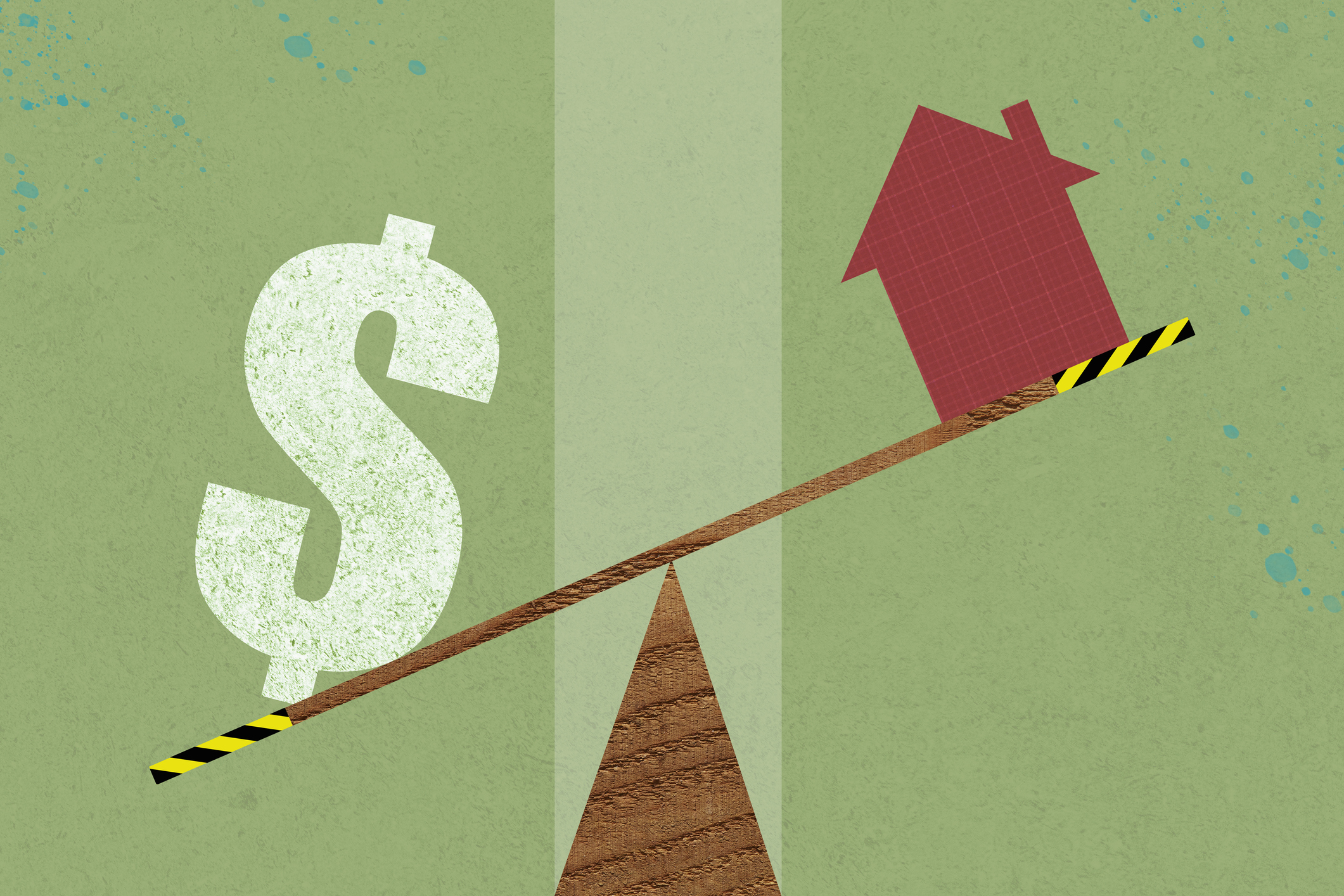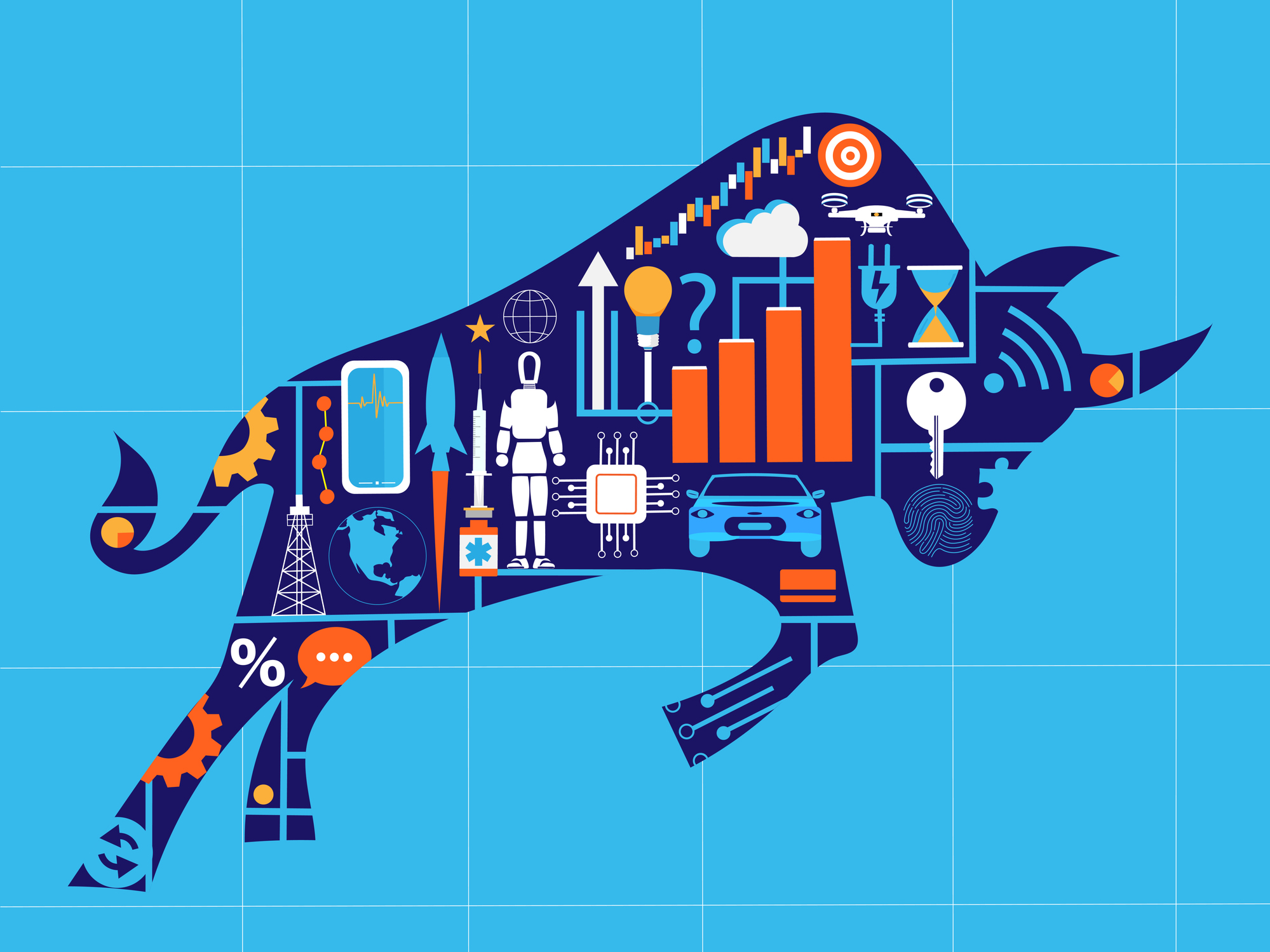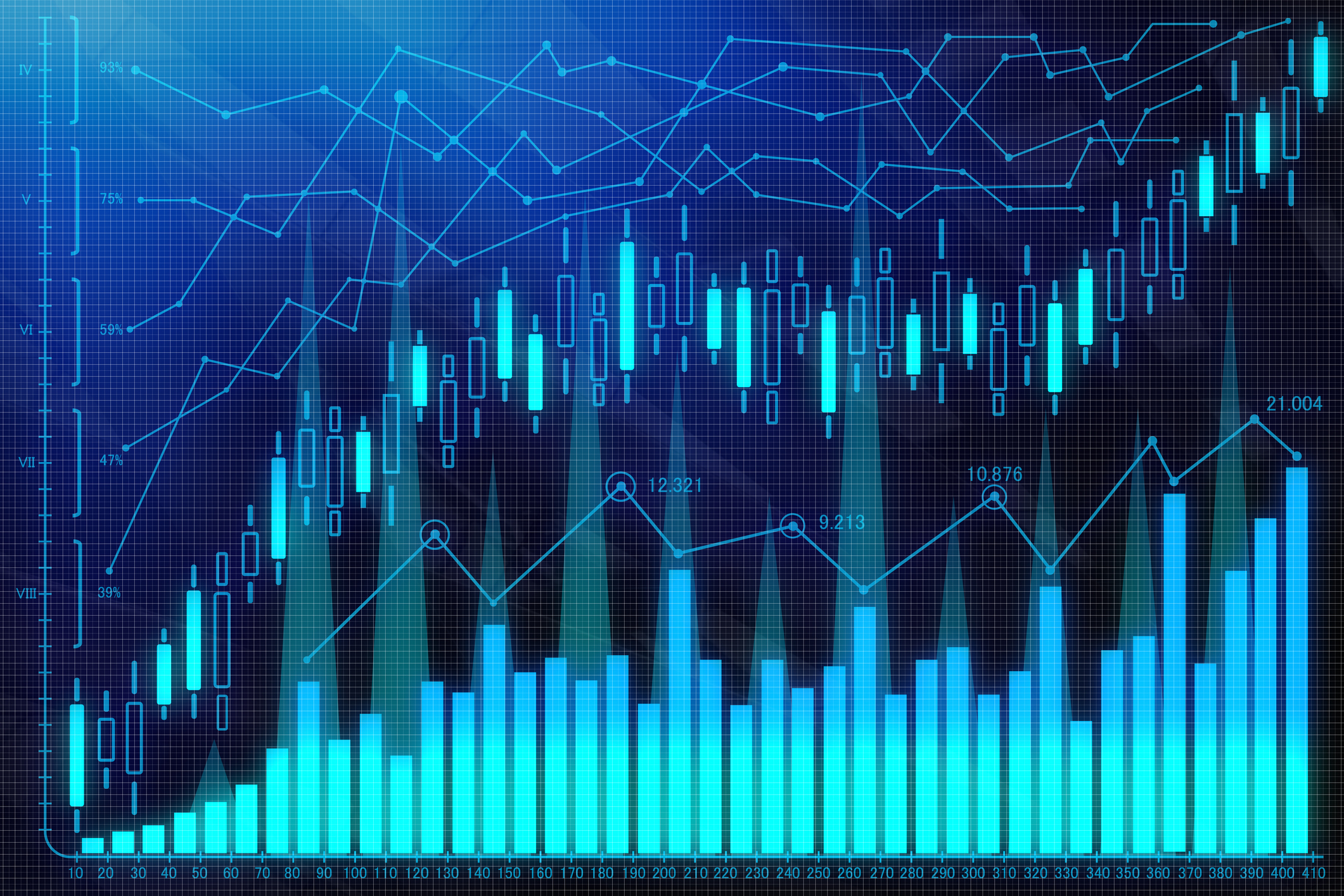All 30 Dow Jones Stocks Ranked: Buy, Sell or Hold?
Microsoft, Nvidia and Amazon are Wall Street's top Dow Jones stocks to buy now. Some other names might surprise you.


Dow Jones stocks won't always keep up in a rising market, but you can't beat them when it comes to stability and defense in a down market.
Case in point: the benchmark S&P 500 gained more than 16% on a price basis for the year to date through the end of November, while the "growthier" but riskier tech-heavy Nasdaq Composite added 21%.
The Dow Jones Industrial Average, that elite list of 30 mostly more mature industry leaders, was up a bit more than 12% over the same span.
But in 2022, when the S&P 500 fell 18% and the Nasdaq plunged 32%, the Dow only lost 8.8%.
You can credit the Magnificent 7 stocks for much of the Dow's recent underperformance.
Of the mega-cap tech names driving so much of the bull market's returns, only Microsoft (MSFT), Apple (AAPL), Amazon.com (AMZN) and Nvidia (NVDA) can be found in the blue-chip average.
The fact that the Dow is weighted by price rather than market cap limits the Mag 7's contributions on the way up, but then it also helps limit any damage on their way down.
It's important to know the Dow's recent performance isn't abnormal. Half of the average's components are low-beta stocks. That means they tend to lag in up markets, but hold up better when everything is selling off.
This low-beta skew can have advantages for long-term investors. After all, as bright a time as it's been for equity investors, downside risks very much remain.
A new international trade regime has injected uncertainty into both global financial markets and the global economy.
Fears of an economic slowdown are rising, with surveys of economists putting the odds of recession hitting in the next year at about 33%. The New York Fed's yield-curve model assigns a 26% probability of the U.S. entering a recession over the next 12 months.
Should such a change in market fortunes come to pass ... well, that's where Dow Jones stocks come in.
Dow Jones stocks ranked
This collection of industry-leading companies and dividend growth stalwarts with their fortress-like balance sheets can offer relative stability in tempestuous market times.
From the best Dow dividend stocks to the most widely held blue chip stocks, components of the industrial average occupy top spots in the portfolios of hedge funds and billionaire investors.
Warren Buffett's Berkshire Hathaway (BRK.B), in particular, is a huge fan of select Dow stocks.
To get a sense of which Dow Jones stocks Wall Street recommends at an increasingly uncertain time for equities, we screened the DJIA by analysts' consensus recommendations, from worst to first, using data from S&P Global Market Intelligence.
Here's how the ratings system works: S&P surveys analysts' stock calls and scores them on a five-point scale, where 1.0 equals a Strong Buy and 5.0 is a Strong Sell. Scores between 3.5 and 2.5 translate into Hold recommendations.
Scores higher than 3.5 equate to Sell ratings, while scores equal to or below 2.5 mean that analysts, on average, rate shares at Buy. The closer a score gets to 1.0, the higher conviction the Buy recommendation.
In other words, lower scores are better than higher scores.
Please note that Nvidia replaced Intel (INTC) in the gauge in November 2024, while paint maker Sherwin-Williams (SHW) was swapped in for chemicals company Dow (DOW).
Amazon.com (AMZN) was added to the Dow in February 2024, replacing Walgreens Boots Alliance, which has since been taken private.
See the table below for analysts' consensus recommendations on all 30 Dow Jones stocks, per S&P Global Market Intelligence, as of December 2, 2025.

Company (Ticker) | Analysts' consensus recommendation score | Analysts' consensus recommendation |
|---|---|---|
Travelers (TRV) | 2.54 | Hold |
Goldman Sachs (GS) | 2.52 | Hold |
American Express (AXP) | 2.52 | Hold |
International Business Machines (IBM) | 2.48 | Buy |
Amgen (AMGN) | 2.41 | Buy |
Verizon Communications (VZ) | 2.29 | Buy |
JPMorgan Chase (JPM) | 2.28 | Buy |
McDonald's (MCD) | 2.27 | Buy |
Caterpillar (CAT) | 2.18 | Buy |
Johnson & Johnson (JNJ) | 2.16 | Buy |
Chevron (CVX) | 2.07 | Buy |
Cisco Systems (CSCO) | 2.04 | Buy |
Sherwin-Williams (SHW) | 2.04 | Buy |
UnitedHealth Group (UNH) | 2.00 | Buy |
Procter & Gamble (PG) | 2.00 | Buy |
Honeywell International (HON) | 2.00 | Buy |
Apple (AAPL) | 2.00 | Buy |
Nike (NKE) | 1.98 | Buy |
Merck & Co. (MRK) | 1.97 | Buy |
3M (MMM) | 1.94 | Buy |
Home Depot (HD) | 1.86 | Buy |
Salesforce (CRM) | 1.67 | Buy |
Coca-Cola (KO) | 1.63 | Buy |
Boeing (BA) | 1.62 | Buy |
Walt Disney (DIS) | 1.61 | Buy |
Visa (V) | 1.60 | Buy |
Walmart (WMT) | 1.37 | Strong Buy |
Amazon.com (AMZN) | 1.33 | Strong Buy |
Nvidia (NVDA) | 1.33 | Strong Buy |
Microsoft (MSFT) | 1.25 | Strong Buy |
Related Content
Profit and prosper with the best of Kiplinger's advice on investing, taxes, retirement, personal finance and much more. Delivered daily. Enter your email in the box and click Sign Me Up.

Dan Burrows is Kiplinger's senior investing writer, having joined the publication full time in 2016.
A long-time financial journalist, Dan is a veteran of MarketWatch, CBS MoneyWatch, SmartMoney, InvestorPlace, DailyFinance and other tier 1 national publications. He has written for The Wall Street Journal, Bloomberg and Consumer Reports and his stories have appeared in the New York Daily News, the San Jose Mercury News and Investor's Business Daily, among many other outlets. As a senior writer at AOL's DailyFinance, Dan reported market news from the floor of the New York Stock Exchange.
Once upon a time – before his days as a financial reporter and assistant financial editor at legendary fashion trade paper Women's Wear Daily – Dan worked for Spy magazine, scribbled away at Time Inc. and contributed to Maxim magazine back when lad mags were a thing. He's also written for Esquire magazine's Dubious Achievements Awards.
In his current role at Kiplinger, Dan writes about markets and macroeconomics.
Dan holds a bachelor's degree from Oberlin College and a master's degree from Columbia University.
Disclosure: Dan does not trade individual stocks or securities. He is eternally long the U.S equity market, primarily through tax-advantaged accounts.
-
 Is a New $25,000 Health Care Tax Deduction Coming in 2026?
Is a New $25,000 Health Care Tax Deduction Coming in 2026?Tax Policy A proposal from GOP Sen. Josh Hawley is adding to the chatter about health care affordability.
-
 Are You Middle-Class? Here's The Most Tax-Friendly State For Your Family
Are You Middle-Class? Here's The Most Tax-Friendly State For Your FamilyTax Tips We found the state with no income tax, low property tax bills, and exemptions on groceries and medicine.
-
 Should You Tap Your Home Equity Before 2026?
Should You Tap Your Home Equity Before 2026?As borrowing rates and tax law shifts converge, here's what homeowners need to know before pulling equity out of their home.
-
 What Investors May Face in the New Year: Interview
What Investors May Face in the New Year: InterviewKeith Lerner, the chief market strategist and chief investment officer for Truist Wealth, speaks with Kiplinger.
-
 Three Year-End Tax Strategies for Retirees With $2 Million to $10 Million
Three Year-End Tax Strategies for Retirees With $2 Million to $10 MillionTo avoid the OBBB messing up your whole tax strategy, get your Roth conversions and charitable bunching done by year's end.
-
 'Politics' Is a Dirty Word for Some Financial Advisers: 3 Reasons This Financial Planner Vehemently Disagrees
'Politics' Is a Dirty Word for Some Financial Advisers: 3 Reasons This Financial Planner Vehemently DisagreesYour financial plan should be aligned with your values and your politics. If your adviser refuses to talk about them, it's time to go elsewhere.
-
 For a Move Abroad, Choosing a Fiduciary Financial Planner Who Sees Both Sides of the Border Is Critical
For a Move Abroad, Choosing a Fiduciary Financial Planner Who Sees Both Sides of the Border Is CriticalWorking with a cross-border financial planner is essential to integrate tax, estate and visa considerations and avoid costly, unexpected liabilities.
-
 UNH Sparks a 408-Point Surge for the Dow: Stock Market Today
UNH Sparks a 408-Point Surge for the Dow: Stock Market TodayThe best available data right now confirm both a slowing employment market and a December rate cut, a tension reflected at the equity index level.
-
 Medline IPO: Should You Buy MDLN Stock?
Medline IPO: Should You Buy MDLN Stock?The massive Medline IPO is close at hand, with the medical supply company expected to start trading by the end of the year.
-
 I'm a Financial Adviser: This Tax Trap Costs High Earners Thousands Each Year
I'm a Financial Adviser: This Tax Trap Costs High Earners Thousands Each YearMutual funds in taxable accounts can quietly erode your returns. More efficient tools, such as ETFs and direct indexing, can help improve after-tax returns.
-
 A Financial Adviser's Guide to Divorce Finalization: Tying Up the Loose Ends
A Financial Adviser's Guide to Divorce Finalization: Tying Up the Loose EndsAfter signing the divorce agreement, you'll need to tackle the administrative work that will allow you to start over.
